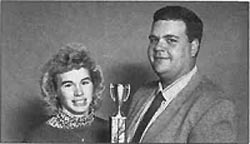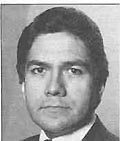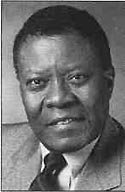 |
Home | Search | Browse | About IPO |
Staff |
Links |
|
Chicago |
Click here for Names cont. |
|
Names cont.
As president of WIU, he will oversee an operating budget of $64 million and a campus of 13,000 students. He succeeds Ralph Wagoner, who stepped down in June to accept the presidency of Augustana College in South Dakota. "In an era when much of American higher education has faced severe criticism about its efficiency and effectiveness, and about its fundamental purpose, Western has maintained its historic strengths and an admirable clarity of vision," said Spencer.
Spencer served as acting provost, assistant professor and associate dean of the graduate school at the University of Montana and is a member of Phi Beta Kappa. A graduate of Illinois College in Jacksonville, Spencer earned a master's degree and Ph.D. from the University of Virginia.
|
|
Wedgeworth named Robert Wedgeworth of Champaign was named university librarian at the University of Illinois at Urbana-Champaign on November 12 by the U of I Board of Trustees. He had been serving as interim university librarian since September of 1992. Prior to his joining the U of I library, Wedgeworth was dean of Columbia University's School of Library Service from 1985 to 1992 and before that he was executive director of the American Library Association from 1972 to 1985. He also taught at Rutgers University for three years. Wedgeworth earned a master's degree from the U of I in library science. He is president of the International Federation of Library Associations and Institutions an is cochair of an advisory committee on copyright registration and deposit. |
The U of I Library has nearly 15 million items and 38 departmental libraries, and it is the third largest academic library in the country.
Hammersberg wins
technologist award
Suzanne Hammersberg of Orland Park, dean of health and human services at Moraine Valley Community College, Palos Hills, was awarded the Technologist of the Year Award by the American Society of Clinical Patholo-gists on November 3.
Prior to joining Moraine College, Hammersberg was dean of instruction and professor of allied health technologies for Miami-Dade Community College in Miami, Fla. She is also the former director of the Medical Technology Program and associate professor of pathology for the George Washington University School of Medicine and Health Sciences in Washington, D.C., and was chairman of the Medical Technology Department at Xavier University of Louisiana in New Orleans.
She earned a bachelor's degree from the University of Wisconsin-LaCrosse and a master's degree and doctorate from George Washington University. She is a member of the American Society of Clinical Pathologists, American University Women, American Society of Allied Health Professionals and is currently co-editor of the "Professional Perspectives" column in Laboratory Medicine magazine.

|
Carroll County couple Elmer and Annette Rahn of Mount Carroll received the 1993 Illinois Farm Bureau Young Farmer Award on November 28. The award recognizes the Rahns for their dedication and efforts in farming and leadership. The Rahns and their children, Justin, Cor-rey, Darrin and Rachel, farm nearly |
The Rahns have been involved in the county Farm Bureau Young Farmers committee since graduating from high school. They were chosen from a field of four statewide finalists. As winners, the Rahns will receive 80 hours use of a Case-IH MAXXUM tractor and an expense-paid trip to the 1994 American Farm Bureau Federation annual meeting in Fort Lauderdale, Fla., in late January as representatives from Illinois.
They will also receive trips to the annual meeting of GROWMARK Inc., a farmer supply cooperative, next September and to the Illinois Farm Bureau's statewide Young Farmers Conference, both in Chicago, as well as a three-year membership in the Illinois Corn Growers Association.
James Pollock and Beverley Scobell
January 1994/Illinois Issues/35
|
|

